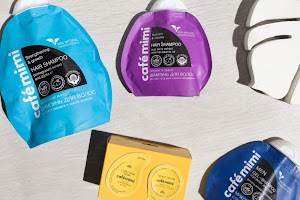Today I would like to introduce you some of the ingredients found in food. I hope that it will help you to distinguish products harmful to our health and facilitate shopping. I invite you to the rest of the post. ;)
Phosphate acid - E338
Obtained is due to the action of sulfuric acid (H2SO4) on calcium phosphate (Ca3(PO4)2)
It is often added to carbonated drinks (its task is to regulate the acidity of a drink), to the production of fertilizers and in dentistry. It’s a chemical substance naturally found in the body (it is part of body fluids). Safe consumption shouldn’t exceed 1000mg per day. Although it's suitable for consumption, it doesn’t have a beneficial effect on our body. It contributes to bone demineralization. In beverages, it occurs in small amounts along with sugar and caffeine, which isn’t a healthy combination. Not every drink with Phosphate acid is vegan, because sometimes it’s obtained from powdered animal bones. A healthier replacement for these drinks is bread acid or home-made lemonade.
The permissible consumption of phosphate acid is 70mg / kg
Caramel - E150d (occurs also as E150c, and E150b)
It is added to dark beers, colas, jams, confectionery and sauces.
In higher doses it causes hyperactivity and diarrhea, is carcinogenic causes infertility, acts harmful to the stomach, liver, intestines.
The main component that causes this is 4-methylmidazole (4-MI) CSPI - an organization, the Center of Sience in Public Interest classified this substance as a carcinogen, so that manufacturers using this dye were required to put information on carcinogenicity on the label. This led to the fact that Cola produced in California has a lower content of 4-MI. The company, however, protected itself that this substance is harmless, and the smaller amount results from the change in the recipe, in order to adjust its quantity to the pressure which is in the process of production. Instead of artificial drinks, it’s much better to drink fresh fruit juice.
Range of chemical numbers of food additives:
• 100-199 - dyes
• 200-299 - preservatives
• 300-399 - antioxidants and acidity regulators
• 400-499 - emulsifiers, raising agents, gelling agents
• 500-599 - auxiliary equipment
• 600-699 - flavor enhancers
• 900-999 - medium, shiny polish
• 1000-1999 - stabilizers, preservatives
Acceptable consumption of E150d is 150mg / kg
Natural aromas
Usually, food products are tasteless and only after adding the aromas they tempt us with their smell and taste. Natural aromas are an ordinary catchy slogan, through which we often think that something is healthy. Natural flavors must be "natural" according to the law, but they can be produced in laboratory conditions. It’s obtained thanks to the decomposition of, for example: bur, by bacteria and colonies of mold fungi. There is no definite answer as to whether this affects our health, but we may feel misled by calling them "natural".
Flavors such as fruits and vegetables aren’t flavored, while aromas are in yoghurts, frozen foods, stimulants, drinks, children's dishes, sweets and baked goods.
If in the composition of the product we can see:
Aroma - it means that the whole was created in laboratory conditions.
Natural aroma, a natural fragrance - it was created from vegetable and animal raw materials, they can be created with the help of microorganisms.
Vanilla Extract - obtained with the help of alcohol, at the same time contains 100 other flavors of unknown origin
Caffeine (C8H10N4O2)
Most of us associate it quite well, after all, who doesn’t like hot coffee in the morning. Caffeine improves concentration and stimulates the body, however, it’s a short-term effect and disappears from the organism as it expels. For each of us, this effect has different duration, everything depends on our sensitivity to caffeine.
In addition to coffee beans, there are over 60 species of plants that contain caffeine, among others cocoa, tea leaves, guarana. Often, caffeine extracts are added to sweets and beverages. During the day we can consume it unconsciously, eg in chocolate or medicines.
A safe dose for a child between 8 and 11 years is about 5.3mg / kg, or about 150mg per day. For an adult person, a safe dose is about 300 mg per day.
A safe dose for a child between 8 and 11 years is about 5.3mg / kg, or about 150mg per day. For an adult person, a safe dose is about 300 mg per day.
Higher daily intake of up to 2000mg results in health problems such as distraction, dizziness, insomnia.
Nevertheless, at dosesn’t exceeding the norm, it can have a good effect on our health, eg it relieves pain and releases dopamine (the hormone of happiness).
Nevertheless, at dosesn’t exceeding the norm, it can have a good effect on our health, eg it relieves pain and releases dopamine (the hormone of happiness).
And what do you sit about? According to you, are these ingredients really so bad or everything depends on their doses?
Patryk :)











No comments:
Post a Comment